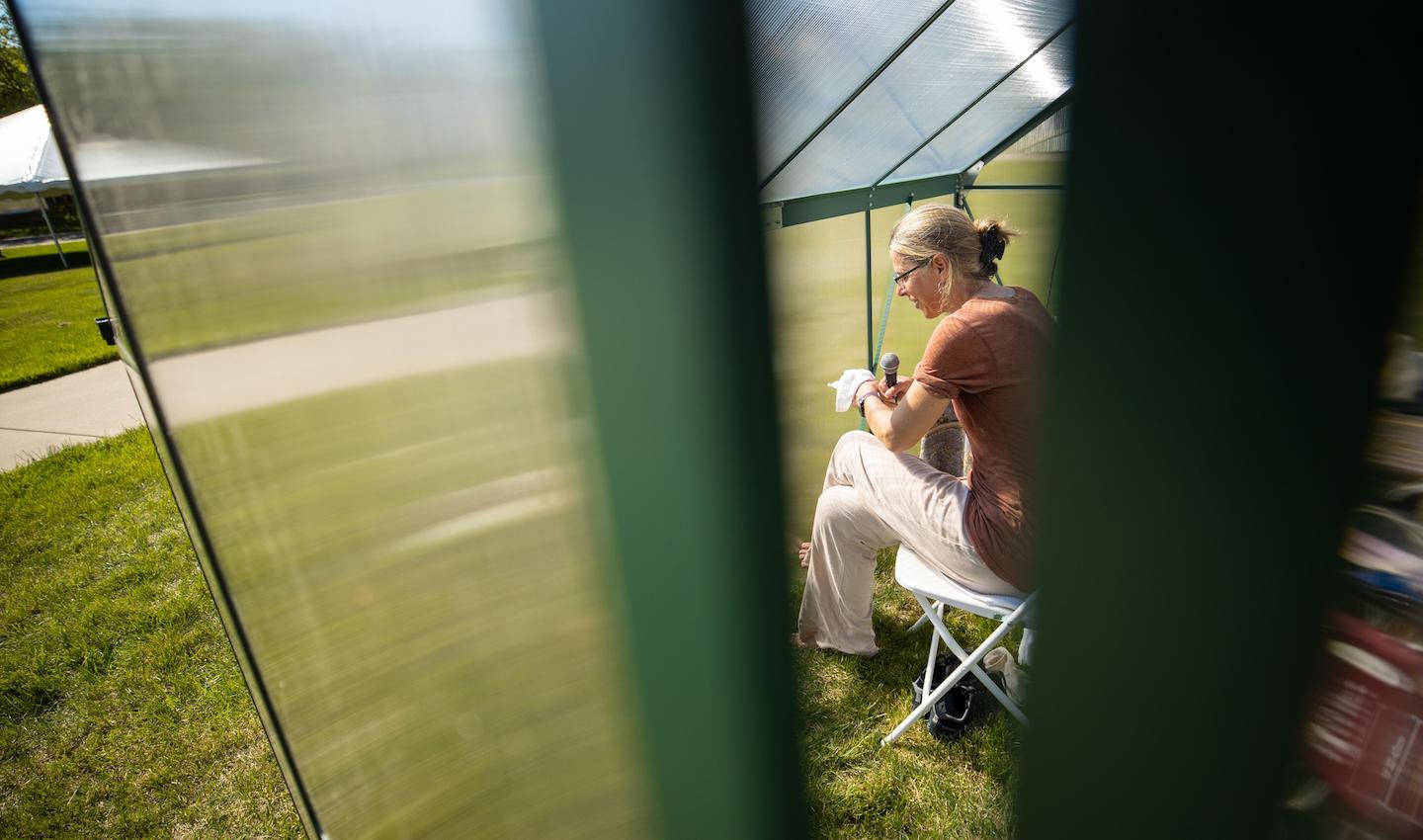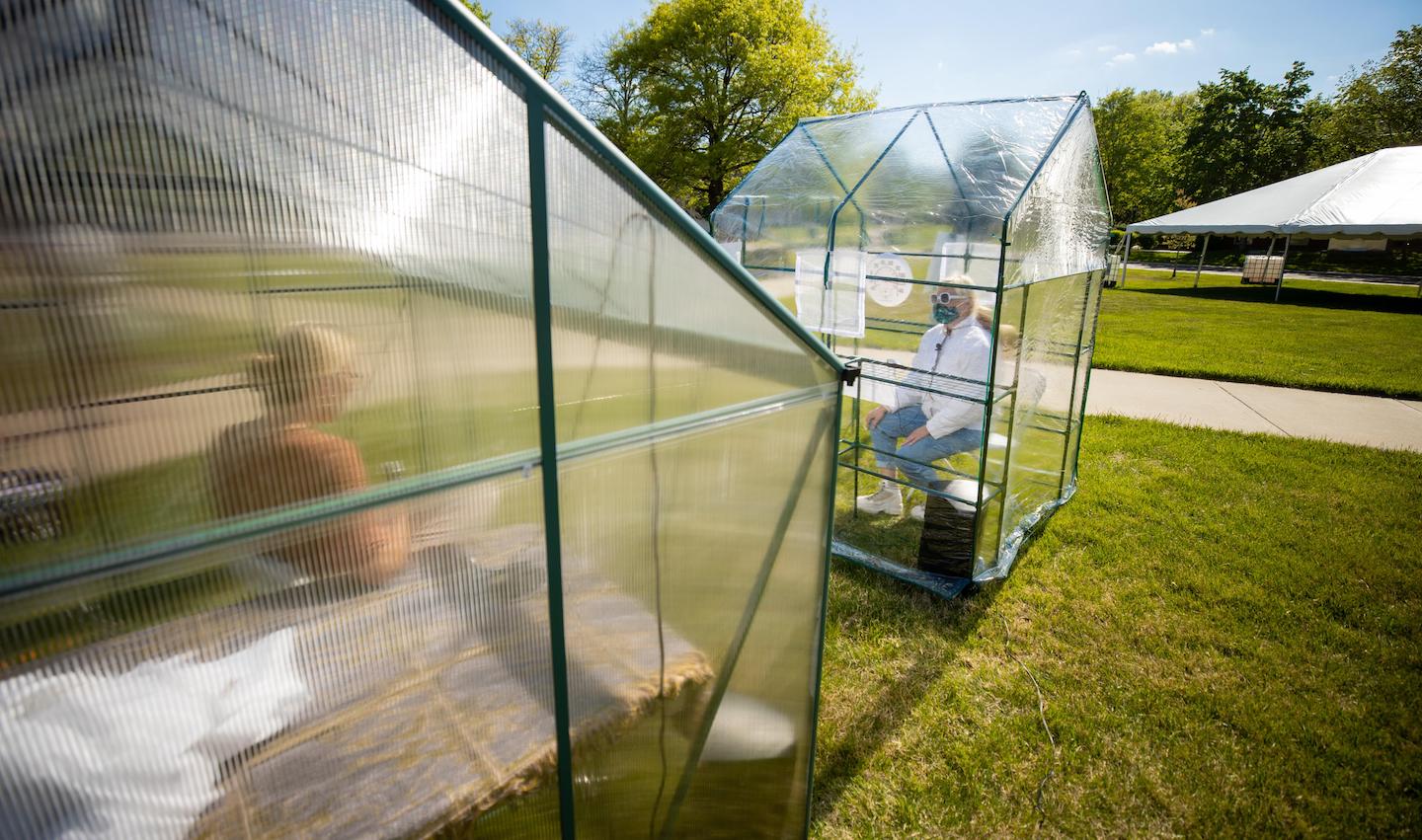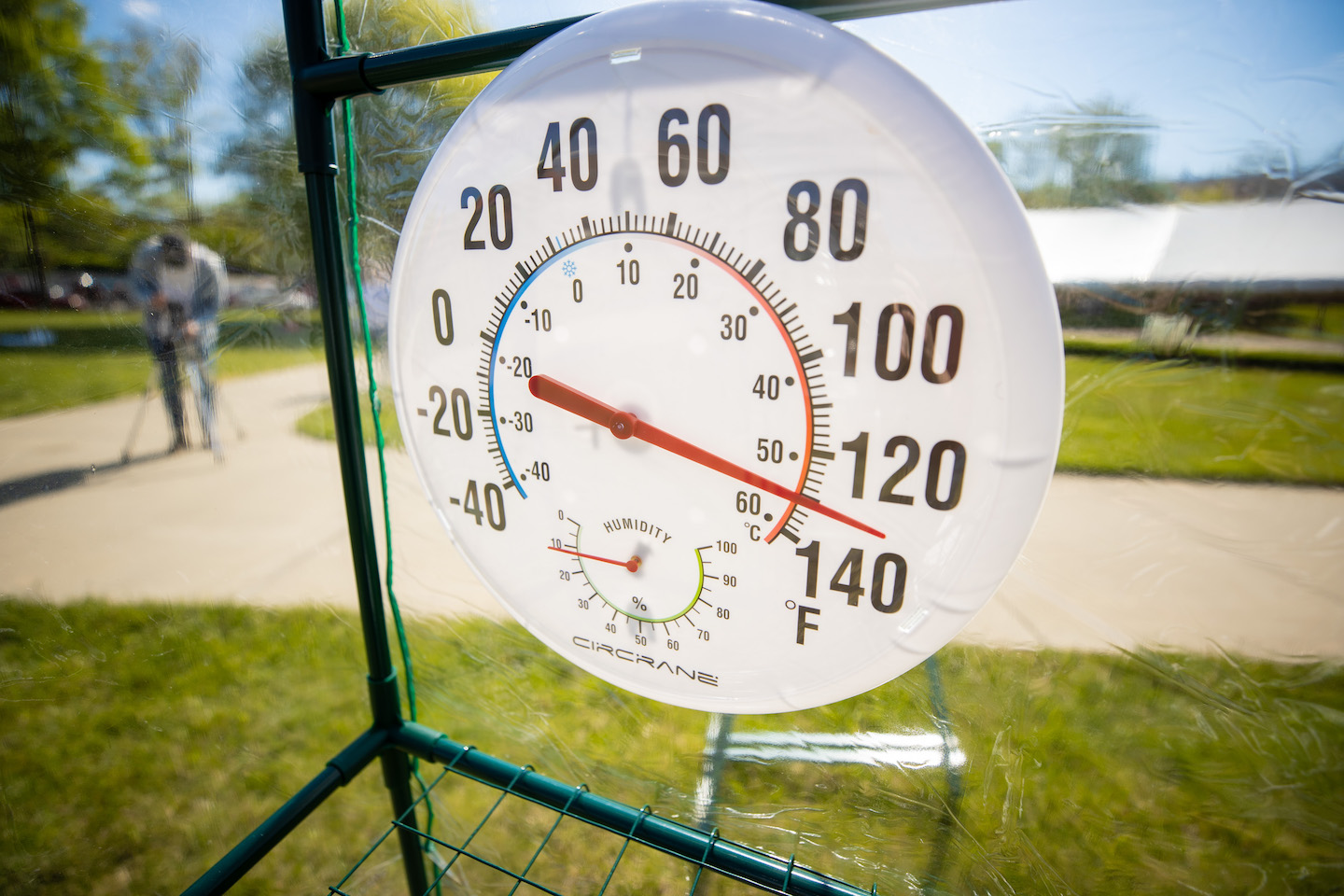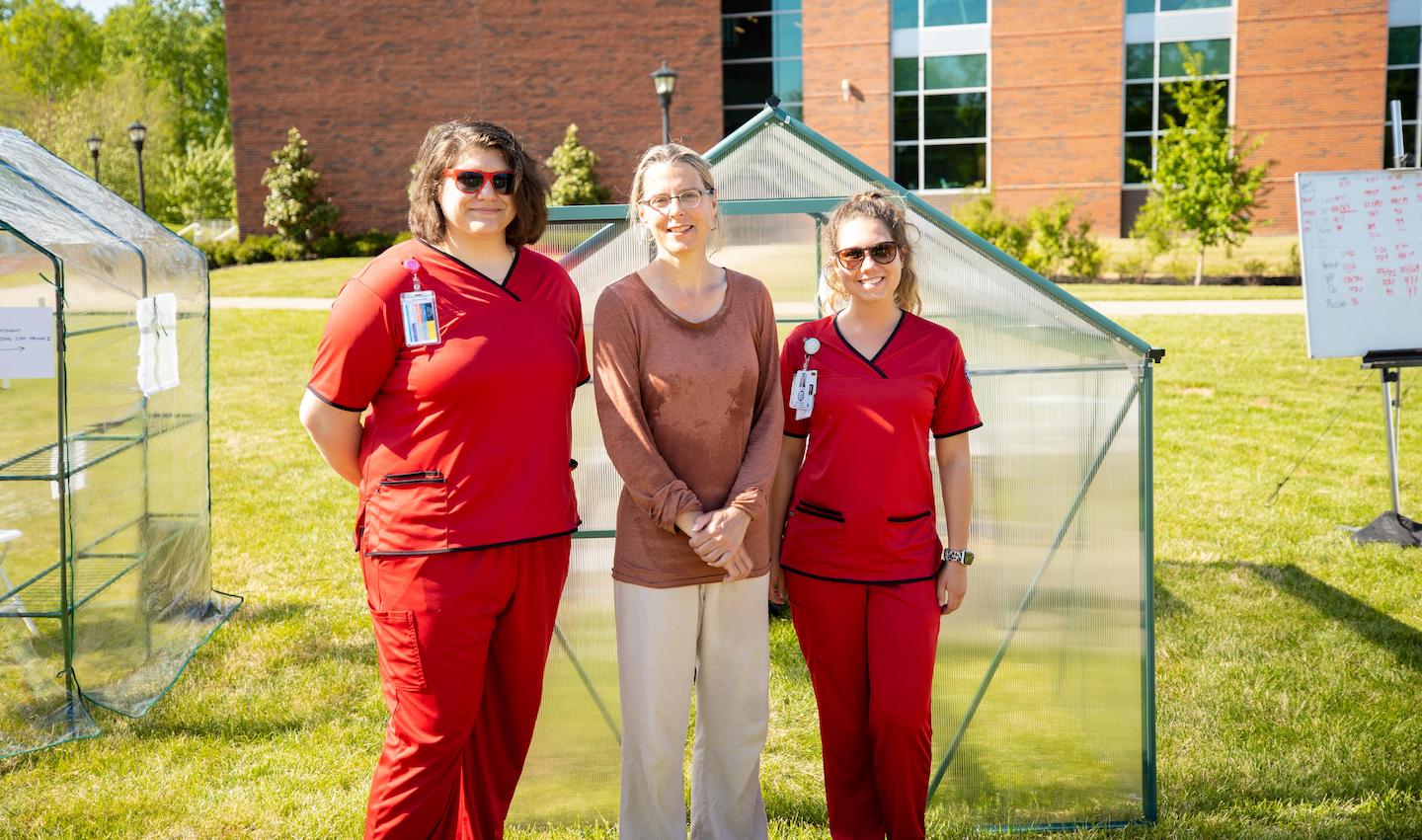Eliza Evans takes us into the future to show the effects of climate change
(Posted April 23, 2021)
On Earth Day, the Art + Design lawn at Austin Peay State University had an interesting sight to see.
Eliza Evans, an environmental artist of about 10 years, was taking part in a durational performance piece where she spent several hours in a “time machine.”
This time machine, a commercial greenhouse, helped to show what the future may look like on Earth. Instead of using statistics and graphs to indicate the changes in the environment, Evans used her body as a proxy.
During this performance, Evans stayed in the time machine for seven hours. Through this, the experiment showed how the human body copes with the effects of the environment, much like the Earth.
“This is just an experiment for me to try to anticipate what the world might be like towards the end of my life,” Evans said.
Evans referred to this art piece as a “personal exploration.” She also shared the experience with those brave enough to step into the time machine.
I had the opportunity of experiencing what Eliza was while also getting to know her better. I stayed in the time machine for a little over 13 minutes, but only a few minutes in, I felt extremely uncomfortable.
Evans discussed how our shared traits allow us to adapt and create solutions together to combat issues we face.
“We have a problem, and we don’t know how bad it is going to be. We need to help each other,” Evans said.
This is not Evans’ first time undergoing this durational performance piece. When Evans was on an artist’s residency in New York, she put out a greenhouse on a lawn as an experiment to see what would happen. Evans said the people who brought her fruit and ice on their own showed her how beautiful this experiment is.
“They just pitched in,” Evans said. “That wasn’t even a question I posed.”
The experiment Evans participated in on APSU’s campus had more structure. In the first experiment Evans conducted, she kept track of her heart rate thinking she could take care of her own health. This performance was also a collaboration with the APSU School of Nursing. Nursing students took Evans’ vitals throughout her performance to see how the heat was affecting her.
“This project has already created a context for the community nursing projects on water quality and community health,” Evans said. “These two projects are in conversation with each other which I think is phenomenal.”
Evans’ goal is to make people aware of the effects Earth is undergoing.
“Even if they disagree, even if someone isn’t quite convinced that climate change is real or that it’s caused by humans, people have positions all along the spectrum, and I’m willing to engage with any,” Evans said.
Evans said she finds conversations with others about her art is a rewarding part of the process.
Evans saw the Earth Day performance as a perfect opportunity to help bring awareness to climate change and its effects on the Earth.
“Every day is Earth Day to me,” Evans said.
Visit Evans’ website to learn more about her work. The performance was sponsored by the Department of Art + Design with support from The Center of Excellence for the Creative Arts.
News Feed
View All News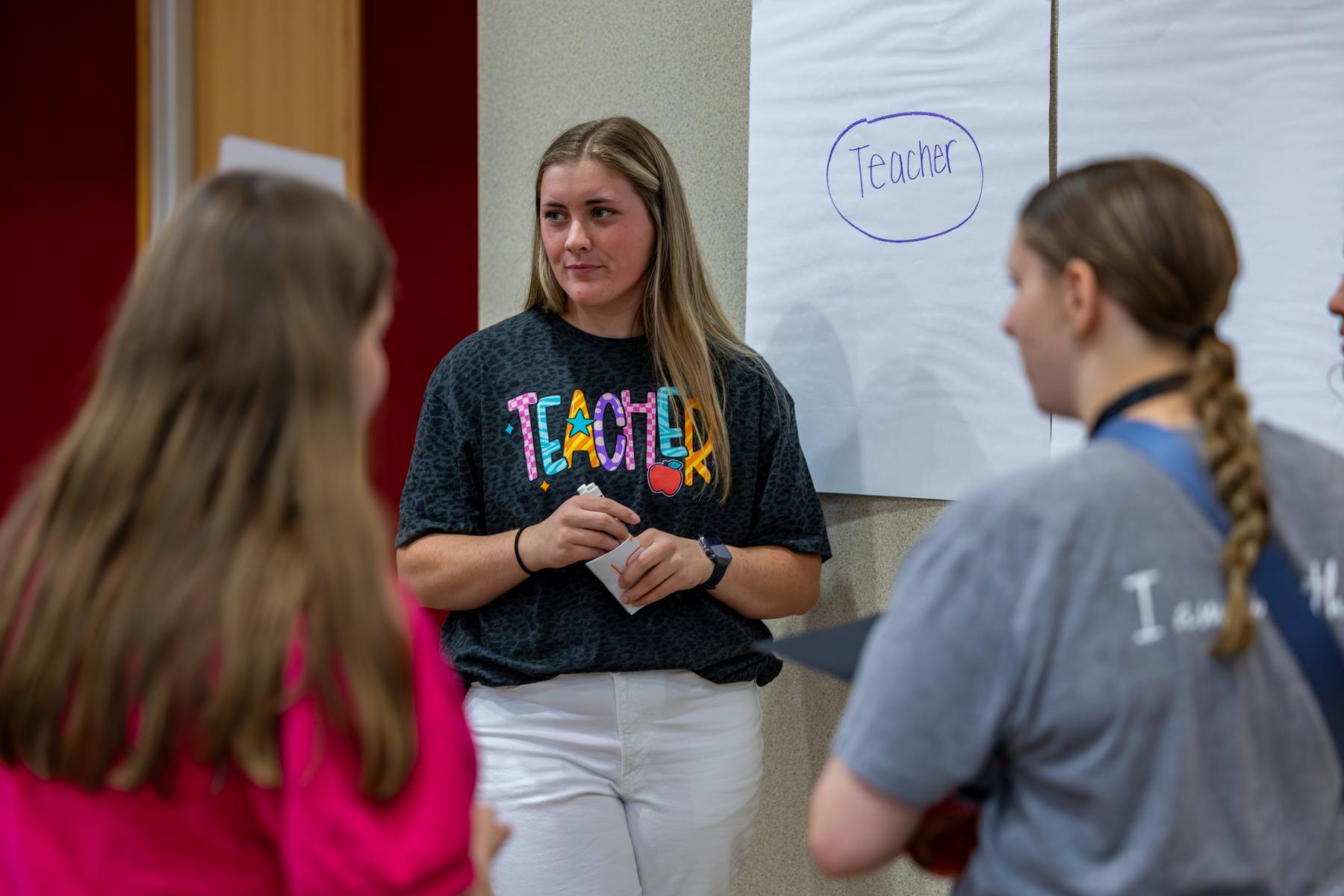
The event, held in the Morgan University Center Ballroom, brought together students from Teaching as a Profession (TAP) programs across Middle Tennessee for a morning of hands-on activities, demonstrations, and networking opportunities.
Read More
Two hours after his interview with the Clarksville Police Department (CPD), Army veteran Dustin Zook had a job offer in hand--a swift result powered by the preparation he built through Austin Peay State University's Military-Affiliated Professionals Program (MAPP).
Read More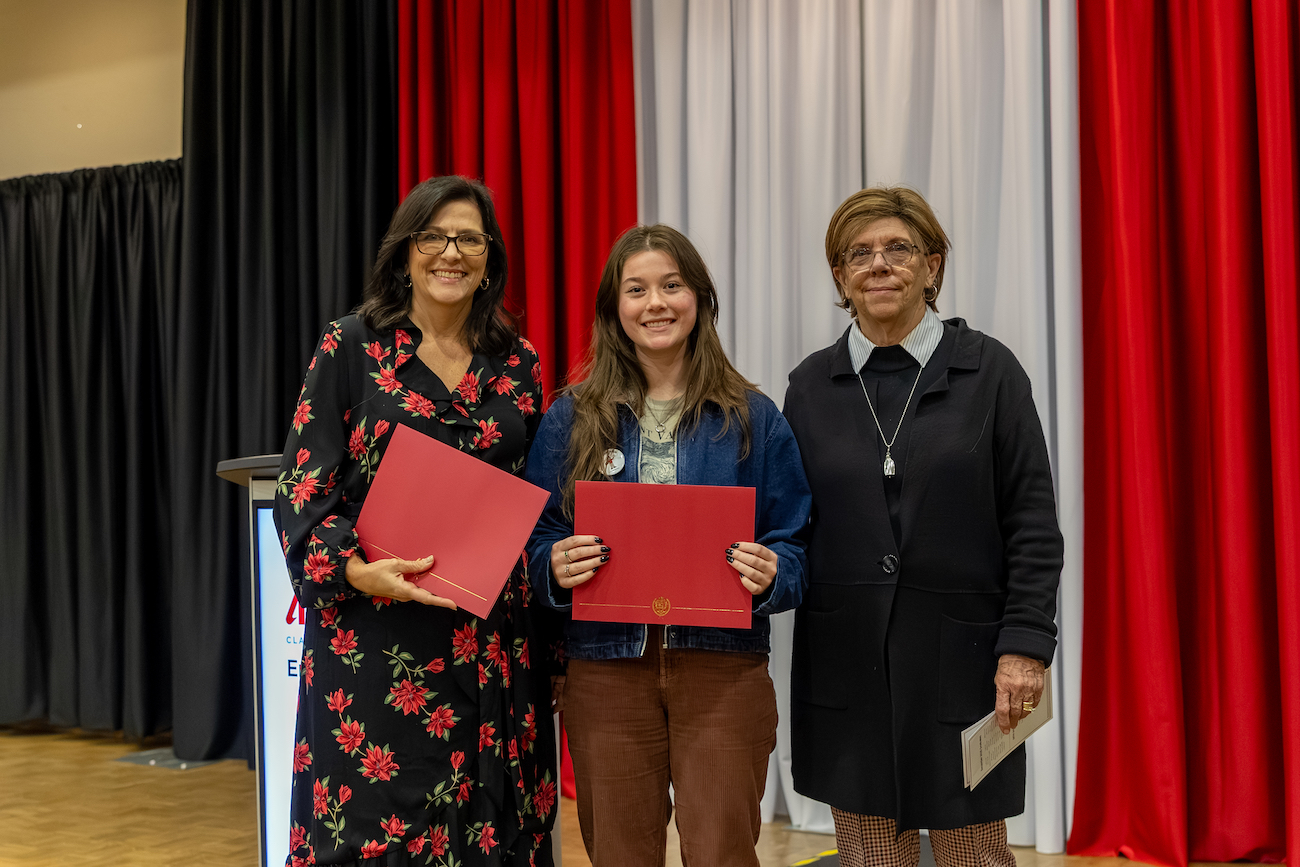
Graduating seniors from Austin Peay State University's Eriksson College of Education achieved the program's highest edTPA passing rate and scores since the university adopted the assessment in 2013, positioning these newly licensed teachers to succeed in Tennessee's classrooms.
Read More